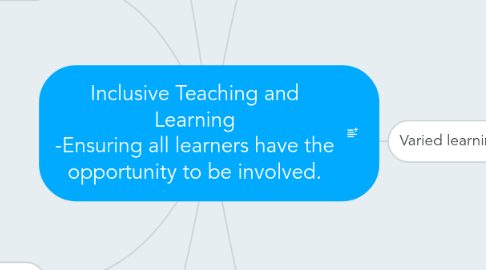
1. Individual needs
1.1. Learners have various needs, physical and in their learning.
1.2. We can complete small tests to test our learners and their needs. Some are essential, and some are part of the process when planning sessions.
1.3. Some learners need extra assistance in their technical ability in my department. We pair these up with the stronger makeup artists so they can all learn from each other. This is sometimes more effective than the tutor telling them what to do.
1.4. Ensuring we meet all styles will ensure we are being equal and fair.
2. Engaging
2.1. Our lessons need to remain engaging, quizzes, images, short fun tasks to be completed.
2.2. We try to engage our learners by encouraging them to do their own research so that they can produce their own designs, ensuring their creativity. This often keeps them on task for longer as it is their own.
2.3. We must ensure we are challenging our learners however, in order to do that we need them to be engaged first.
3. Behaviour and rules
3.1. Studio rules are of massive importance to me and my role at college. A salon based environment needs rules for the health and safety of us and our clients/models.
3.2. They also maintain a sense of responsibility for those who are salon manager for the day as they would in the industry.
3.3. Good behaviour and a sense of responsibilty will stretch the learners and they will complete more challenging tasks.
3.4. This is also vital for learners to learn how any industry runs and how we are expected to behave.
3.5. Videos could be used of good and bad behaviour and learners can identify the correct way to act. Which shows professionalism? What is acceptable? etc providing skills for life and make them more employable. for any job transferable to skills or simple job roles.
3.6. I must ensure my lessons are strict on rules as health and safety are a huge part and must be abided by.
4. Maths, English and ICT
4.1. These skills are vital for any job and are essential for life and career therefore must be lesrnt.
4.2. They appear in various ways and by embedding them into our sessions they become more natural. This makes them easier to handle when they arise.
5. Varied teaching style
5.1. We can meet all learning styles within our lessons at some point however, in my area sometimes a practical is the only way for everyone to participate.
5.2. I always try to start with a demonstration for the visual learners whilst discussing what i am doing for the auditory learners. Then students document what to do on a face chart and then complete the practical. This has met every type of learner.
5.3. By teaching in varied learning styles we meet every learners therefore teaching everyone their skills for life.
6. Motivation
6.1. Motivation is key for learners to learn. In my classes it is usually all practical and can be very difficult to motivate learners to do things. By ensuring the tasks are fun and relevant to them this makings them feel more positive and crack on.
6.1.1. I could show them images of my work as a professional and show them videos of those in the industry of what they could become and show live demonstrations.
6.2. Providing positive feedback to learners will step up their motivation as they will feel they are doing well and want to work harder.
6.3. Sometimes even the weather can reduce motivation and it takes ice breakers to get everyone back on task.
7. Varied learning style
7.1. Visual
7.1.1. Learn by watching how its done.
7.1.1.1. Diagrams
7.1.1.2. images
7.1.1.3. videos
7.1.2. My skills need to be shown so is a strength for me.
7.2. Auditory
7.2.1. Learn by listening to instructions
7.2.1.1. Discussions
7.2.1.2. Speeches
7.2.1.3. Lectures
7.2.2. With my demonstrations I must make sure I am constantly talking through what I do so auditory learners can learn also.
7.3. Kinaesthetic
7.3.1. Learn by performing the task hands on.
7.3.1.1. Role play
7.3.1.2. Drama
7.3.1.3. Active tasks
7.3.2. Another strength in my area as m0st things need to be practised to be learnt.
7.4. Read or Write
7.4.1. Learn by re writing and documenting the task to be completed.
7.4.1.1. Notes
7.4.1.2. Read
7.4.1.3. Lists
7.4.2. In my area sometimes written work is hard until after learning the asctual skill in a practical.
